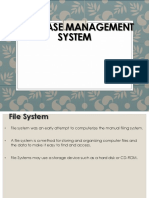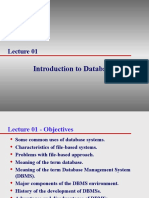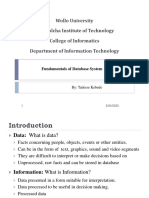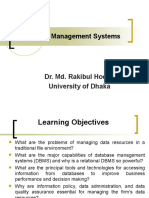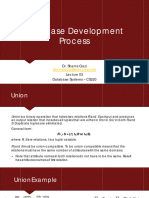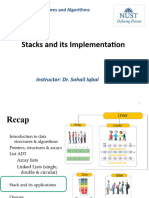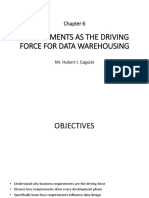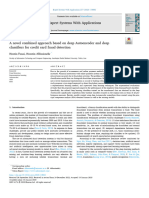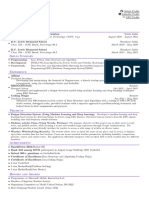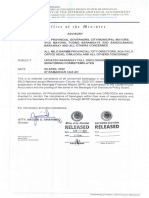0% found this document useful (0 votes)
61 views51 pagesDBMS Intro
The document provides an introduction to a database systems course. It outlines the course objectives, learning outcomes, major topics, suggested books, grading policy, and other relevant information. The key topics covered include fundamental database concepts, logical modeling and design, the relational model, normalization, SQL, and NoSQL systems. The document also defines important database terms and discusses the advantages of the database approach over traditional file processing systems.
Uploaded by
Haseeb MuhammadCopyright
© © All Rights Reserved
We take content rights seriously. If you suspect this is your content, claim it here.
Available Formats
Download as PDF, TXT or read online on Scribd
0% found this document useful (0 votes)
61 views51 pagesDBMS Intro
The document provides an introduction to a database systems course. It outlines the course objectives, learning outcomes, major topics, suggested books, grading policy, and other relevant information. The key topics covered include fundamental database concepts, logical modeling and design, the relational model, normalization, SQL, and NoSQL systems. The document also defines important database terms and discusses the advantages of the database approach over traditional file processing systems.
Uploaded by
Haseeb MuhammadCopyright
© © All Rights Reserved
We take content rights seriously. If you suspect this is your content, claim it here.
Available Formats
Download as PDF, TXT or read online on Scribd
/ 51















